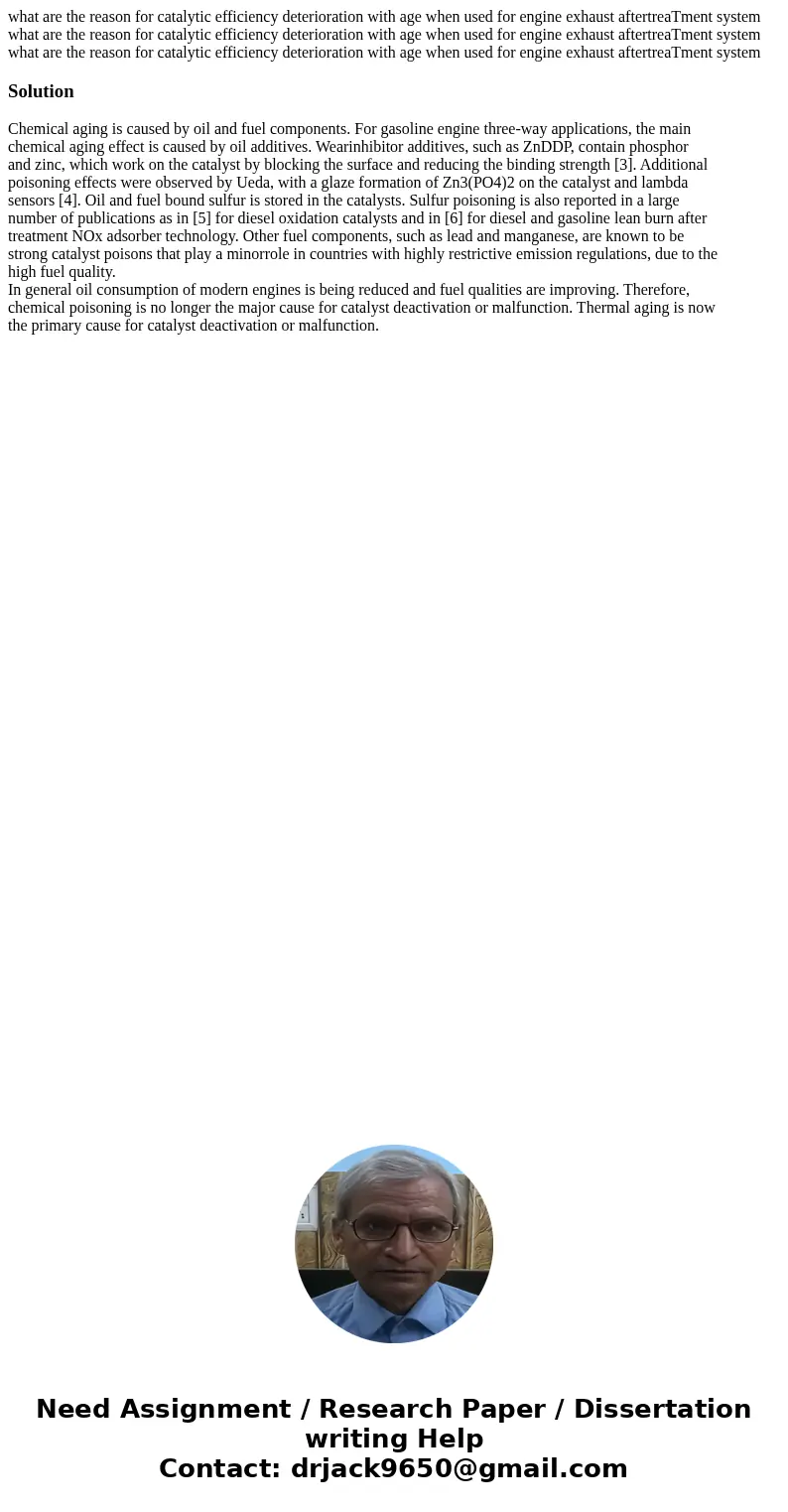what are the reason for catalytic efficiency deterioration w
Solution
Chemical aging is caused by oil and fuel components. For gasoline engine three-way applications, the main
chemical aging effect is caused by oil additives. Wearinhibitor additives, such as ZnDDP, contain phosphor
and zinc, which work on the catalyst by blocking the surface and reducing the binding strength [3]. Additional
poisoning effects were observed by Ueda, with a glaze formation of Zn3(PO4)2 on the catalyst and lambda
sensors [4]. Oil and fuel bound sulfur is stored in the catalysts. Sulfur poisoning is also reported in a large
number of publications as in [5] for diesel oxidation catalysts and in [6] for diesel and gasoline lean burn after
treatment NOx adsorber technology. Other fuel components, such as lead and manganese, are known to be
strong catalyst poisons that play a minorrole in countries with highly restrictive emission regulations, due to the
high fuel quality.
In general oil consumption of modern engines is being reduced and fuel qualities are improving. Therefore,
chemical poisoning is no longer the major cause for catalyst deactivation or malfunction. Thermal aging is now
the primary cause for catalyst deactivation or malfunction.

 Homework Sourse
Homework Sourse